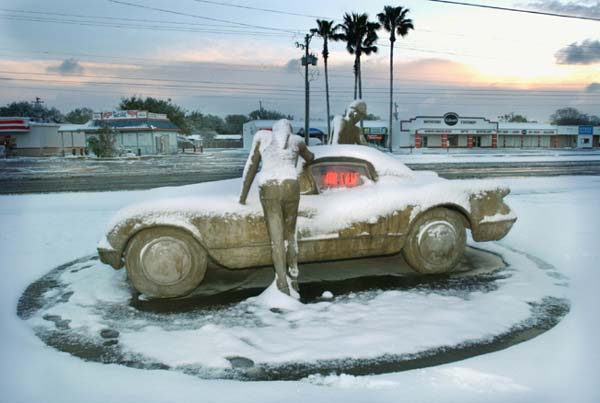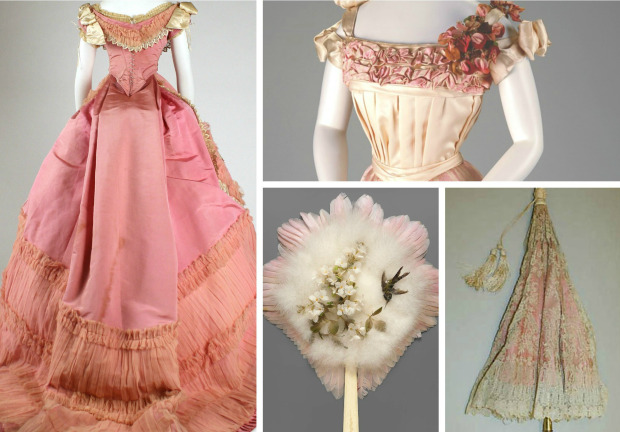
“For Sale” by Danny O’Dowdy
Located: Corner of Weber & Staples Streets Corpus Christi Texas
Description: A man and a woman inspecting a car for sale. Man is kicking tire to check air pressure while the woman peers inside to look at the interior of the car. The car is of a 1953 Corvette.
Purpose: Commissioned by developer Leon Loeb, to decorate Hamlin Shopping Center
At sixteen years old, I felt magic for the first time in my life. Felt, not saw.
Let me break it down…
This picture is of a statue that sat in the parking lot of Hamlin Pharmacy on the corner of Staples and Weber. Having not driven to the corner of Weber and Staples in a long time, I am unaware if it is still standing. Suffice it to say that one of the innocuous sights of my childhood covered in snow when I was sixteen years old was from the realm of make-believe. But that’s not the magic I’m talking about.
The real magic began the night before, on Christmas Eve. I fleetingly remember the weather predicting a light frost that night. That alone was cause for celebration. Frozen water on the ground for even an hour on Christmas Even gave at least a hint of the stereotypical “white Christmas” that appeared in Home Alone and How the Grinch Stole Christmas.
My brother and I sat in the backseat of my mother’s black Suburban as my father drove us to my grandmother’s house on Christmas Eve, 2004. As we drove past fields in the dark, approaching my grandmother’s house on the outskirts of town, a strange sight appeared outside the car window. A dusting of light sleet drifted toward the earth. We rolled down the windows, doubting our own eyes and tinted glass. My father turned up the volume as “White Christmas” by Bing Crosby came on the radio. Whether a coincidence or the idea of a clever and observant Disk Jockey, I will never know. My heart says it was the best kind of serendipity.
Upon arriving at my Nini’s house, the sleet had started to pile in the driveway. Taking this as a sign, my brother and I quickly made the best of our luck. After an hour, a hurriedly-built snow family graced the hood of my grandmother’s car. The sleet continued to drift down, but with characteristic realism my father warned us that it would probably be gone by the morning. At least we made the most of our wondrous snow miracle on Christmas Eve. I cheerfully took that night as a gift, not even daring to hope that the snow-sleet would linger.
Morning came and I rushed to the patio door. The unthinkable had happened. We hurried to my grandmother’s house once again to revel in the miracle. I wrestled and rolled in six inches of snow that had piled into drifts against forgotten piles of plywood. My snow angels didn’t look like the ones in the movies. My physique created the indention of a snow angel with a crushed pelvis. I still crossed it off my bucket list.
I stood in my grandmother’s yard; nose red, toes cold, and heart full. This was it. This was magic. I remember feeling true joy for the first time in my adolescent life. I was completely and utterly overcome with wonder.




 Individual Images via Met Museum, Cincinnati Art Museum, and MFA Boston.
Individual Images via Met Museum, Cincinnati Art Museum, and MFA Boston. 